The tension in facial expressions comes from changes in muscle structure
"Why do some facial expressions always look a bit off when I draw them?"
→ The key to realistic expressions lies in the deformation of facial muscles in coordination with fat pads.
This article breaks down expressions like smiling, crying, anger, and surprise, analyzing the relevant structures to help you enhance the emotional tension and three-dimensional feel in your character drawings.
The article focuses on common emotions (such as happiness, sadness, anger, and surprise), analyzing the corresponding muscle movements with visual diagrams to help you fundamentally build a “dynamic sense of facial structure.”
If you want to understand facial muscle placement, check out this article: How to Sketch Facial Muscles: Capture Realism and Expression
―――――――――――――――――
Basic principles of facial expression movement
Characteristics of expression muscles:
- Most expression muscles are not attached to bones, but to skin, affecting the shape of the face.
- They usually act unilaterally, so asymmetric movements often occur—like winking.
Facial fat pads (e.g., the malar fat pad) are also pulled and compressed by muscles.
Expression: Laughing
Main muscles involved::
Orbicularis oculi, zygomaticus major/minor, risorius + levator anguli oris, orbicularis oris + buccinator
Orbicularis oculi: Contracts and causes wrinkles at the eye corners (commonly called crow’s feet)
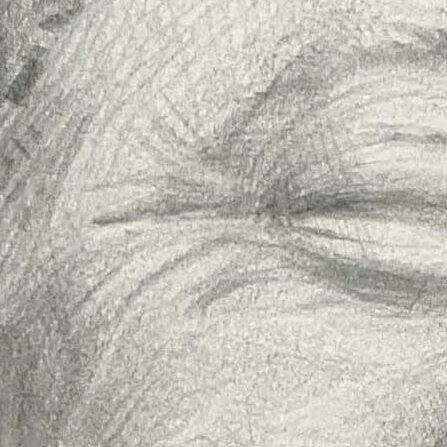
Zygomaticus Major(Smiling Muscle)
- Zygomaticus major: Pulls the corners of the mouth upward and backward from the cheekbone, dragging the skin of the mouth and cheeks.
- This upward pulling also pushes the fat pad upward toward the under-eye and cheekbone area, making it more prominent.
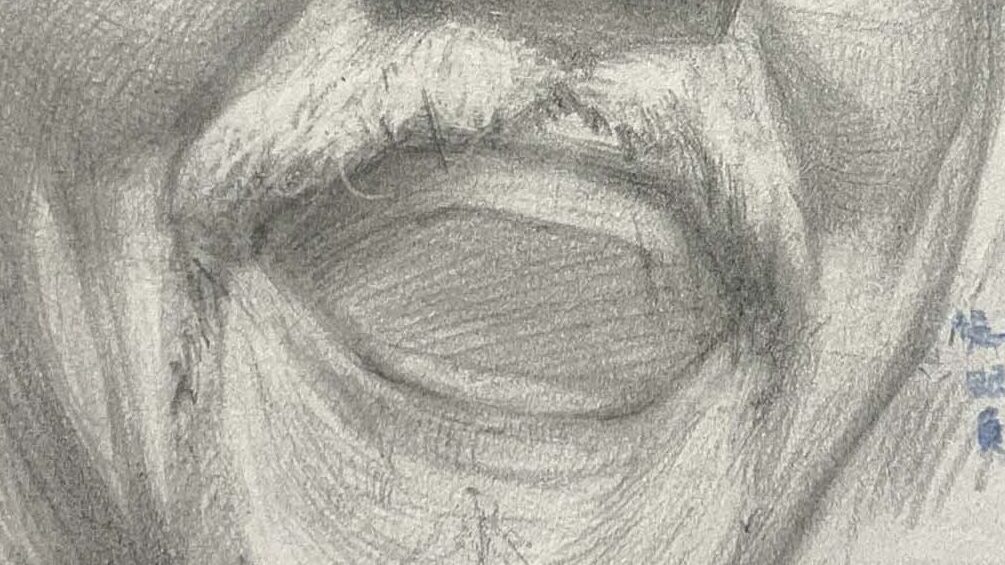
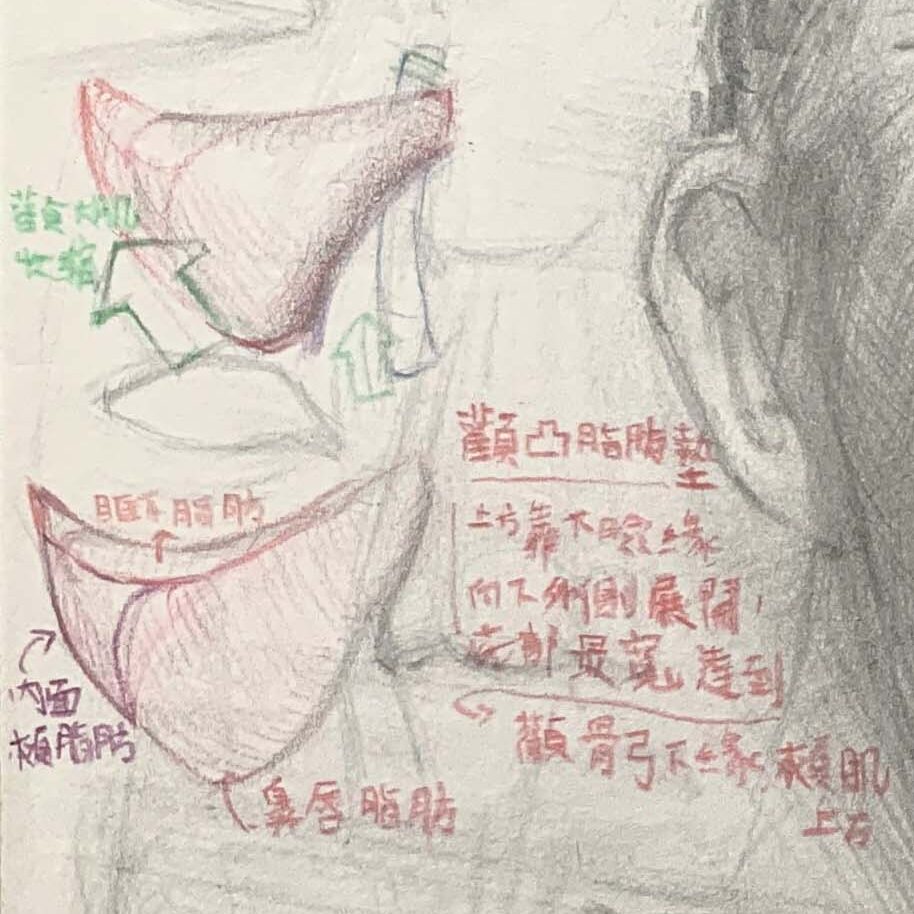
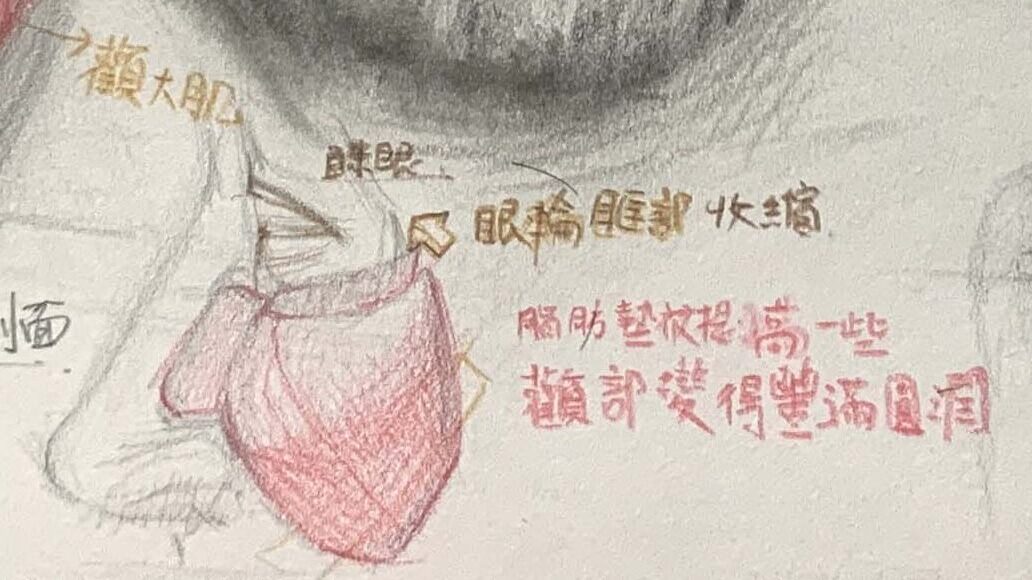
Drawing tips for smiling expressions::
- Use the levator anguli oris to raise the corners of the mouth.
- Use the levator labii superioris alaeque nasi to lift the sides of the nose.
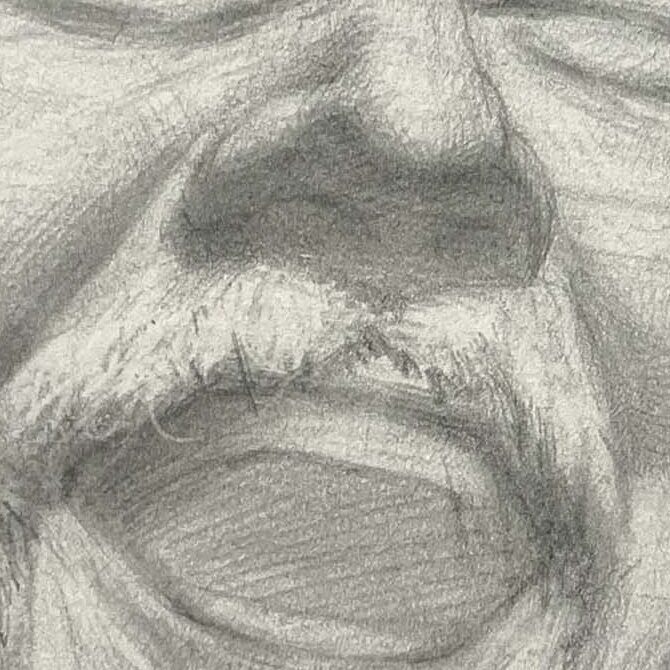
- Brow and Eye Area: Orbicularis Oculi + Depressor Glabellae + Nasalis Contract Together → Squinted Eyes + Frown Lines
- The cheeks appear "temporarily reshaped" from the compression.
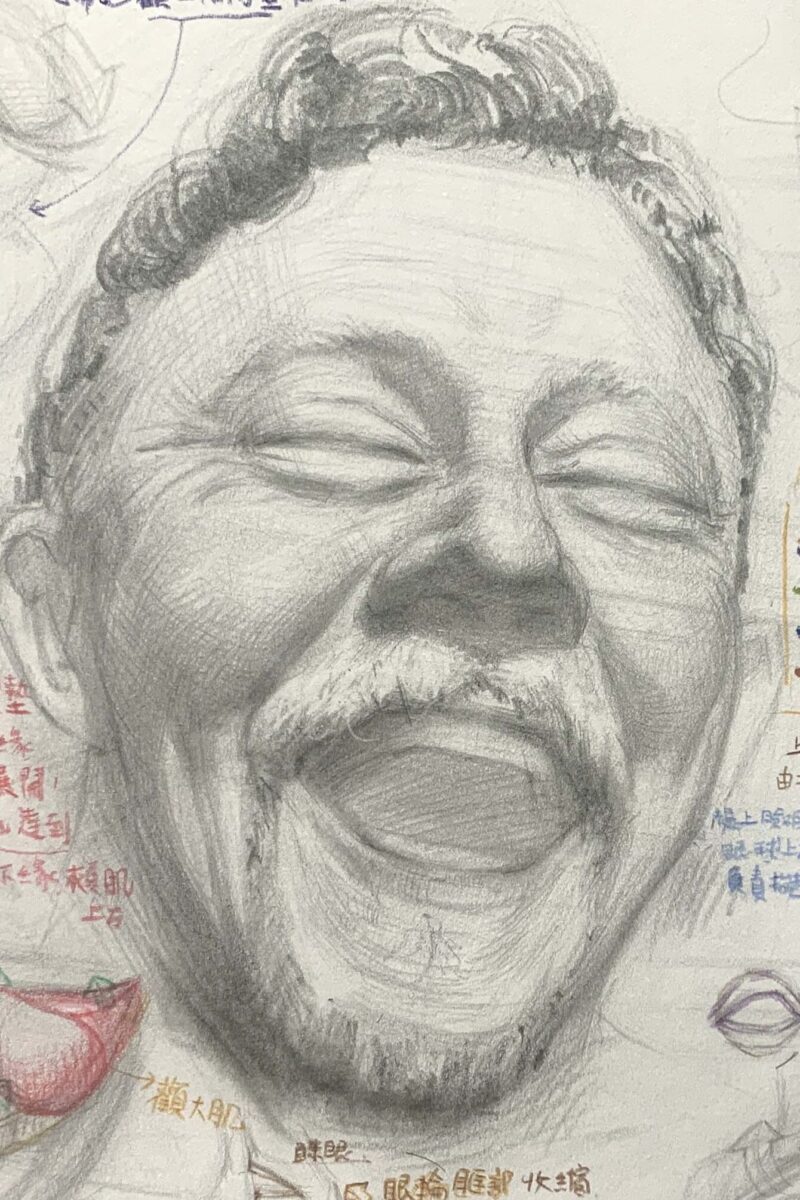
Smiling:
Main muscles: Zygomaticus major/minor, orbicularis oris
- Zygomaticus major visibly pulls upward, lifting the corners of the mouth outward and upward.
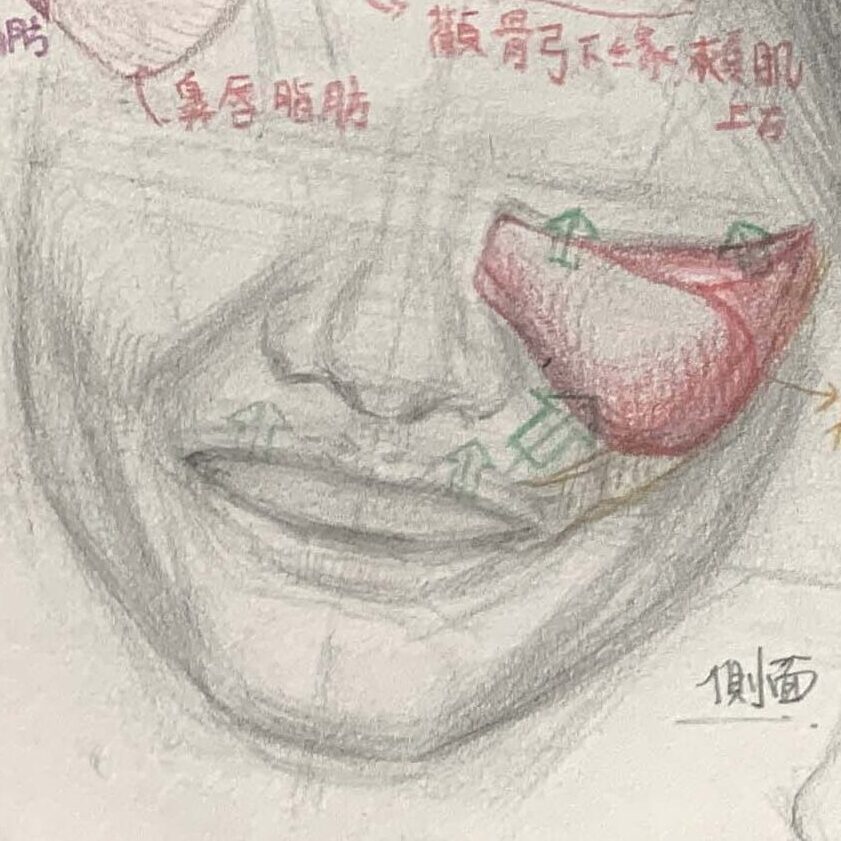
- Orbicularis oculi contracts, creating crow’s feet.
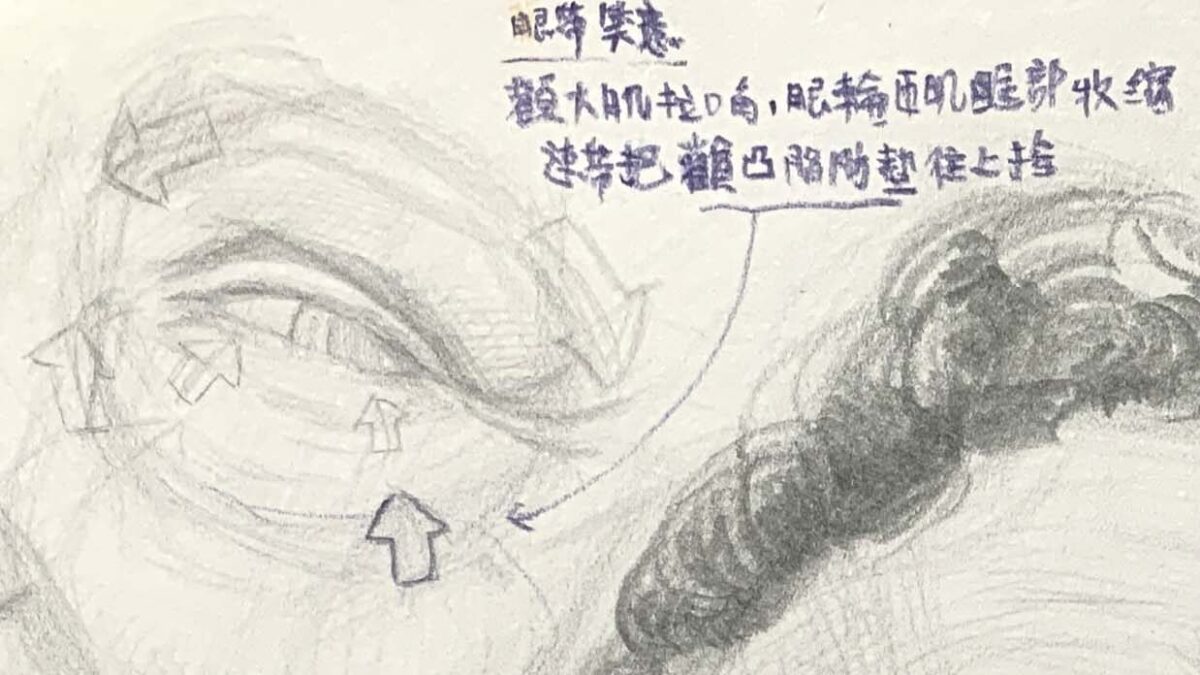
- Nostrils slightly lift.
- Sometimes the nasolabial fold deepens, cheeks bulge.
- Changes include::
- Zygomaticus major pulls corners of the mouth upward/outward, forming smile lines.
- Lower eyelids slightly lift due to cheek muscle compression, forming crow’s feet.
- Area around the nose slightly lifts.
Expression: Sadness
Main muscles: Depressor anguli oris, mentalis, frontalis
- Facial features::
- Mouth corners droop, forming an inverted U-shape.
- Lower lip protrudes, pushed by the mentalis.
- Frontalis raises the inner brows, bringing them closer and forming forehead wrinkles.
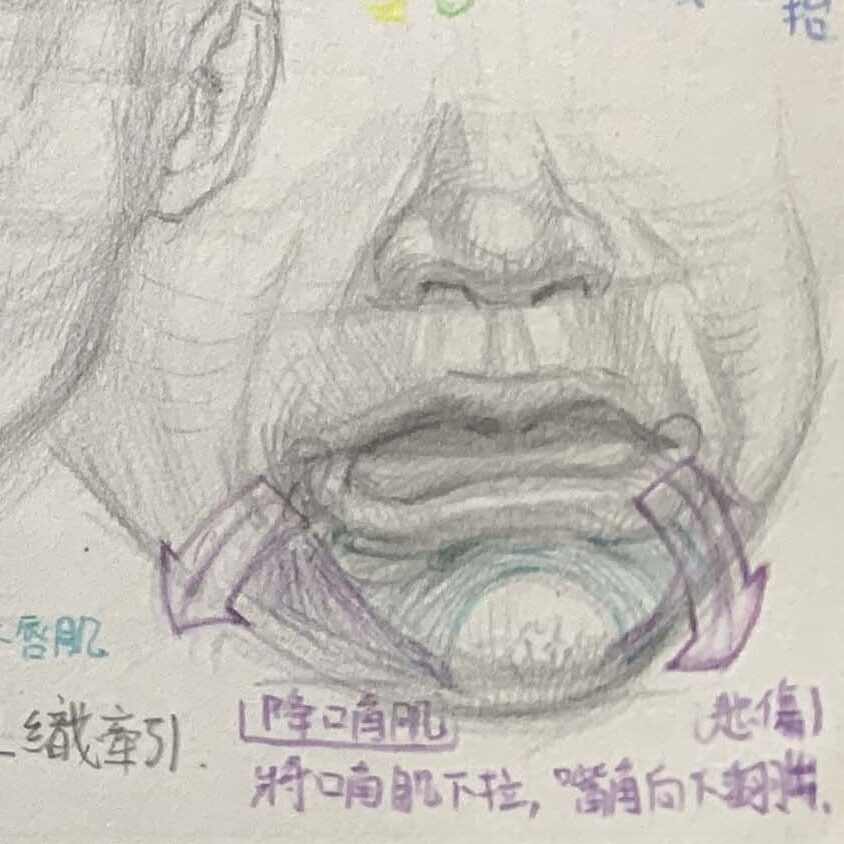
- Main muscle actions::
- Depressor anguli oris + depressor labii inferioris: Pull mouth corners downward
- Frontalis: Lifts center of the eyebrows → forming “sad brows” with a slanted shape
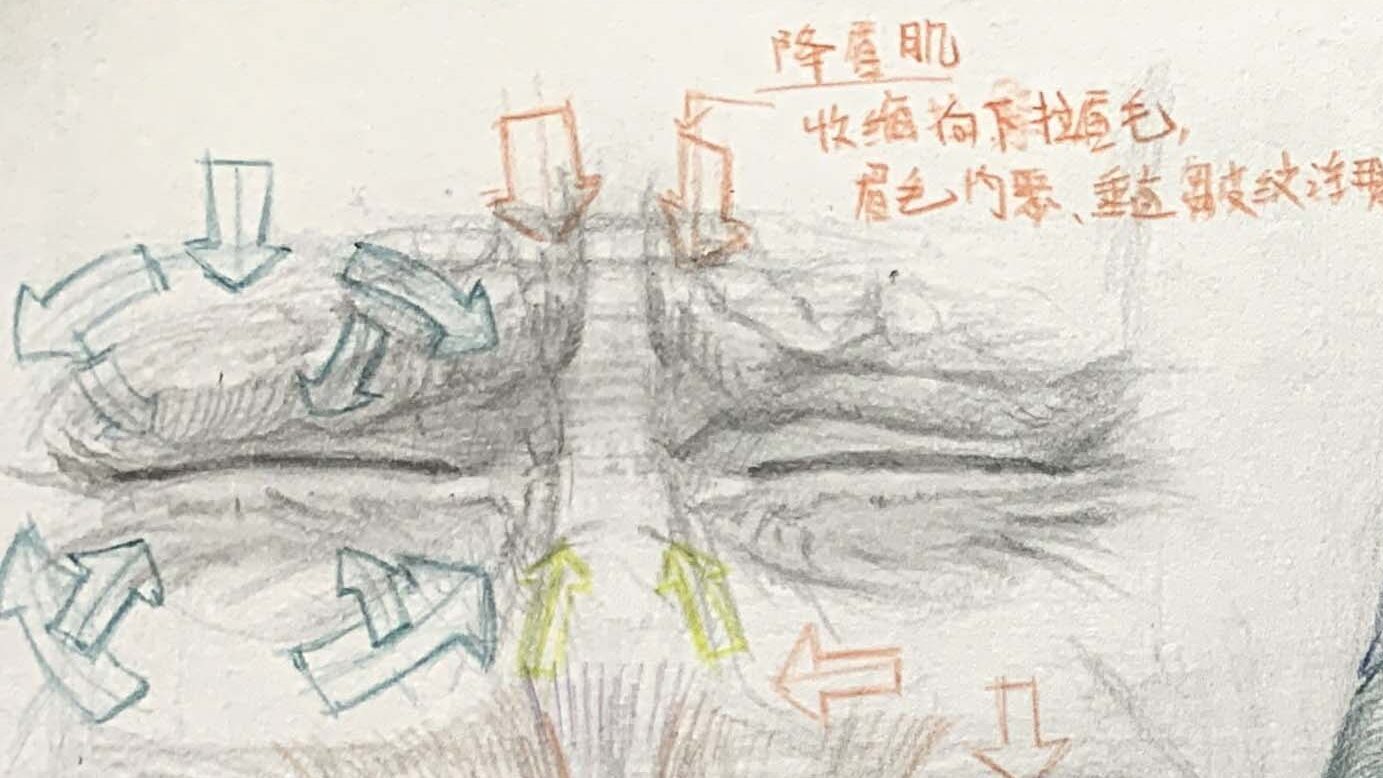
- Mentalis: Contracts to create subtle chin ripples, adding a trembling effect
Observation tips for drawing sadness:
- Mouth forms an “arched” downward curve; lips may be closed tightly or quivering
- Wrinkles appear between the brows
- Drooping eyelids and dull gaze
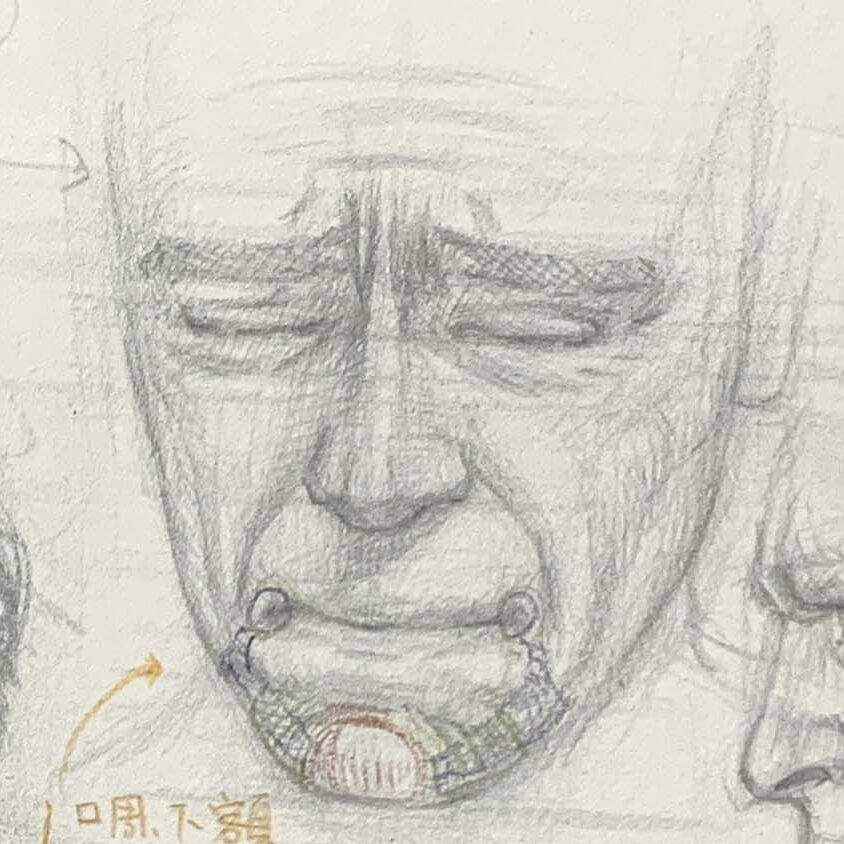
Expression: Anger / Frowning
Main muscles: Corrugator supercilii, depressor supercilii, nasalis Facial features:
- Facial features::
- Inner brows move closer and downward, forming vertical wrinkles.
- The nasal bridge wrinkles; nostrils flare slightly.
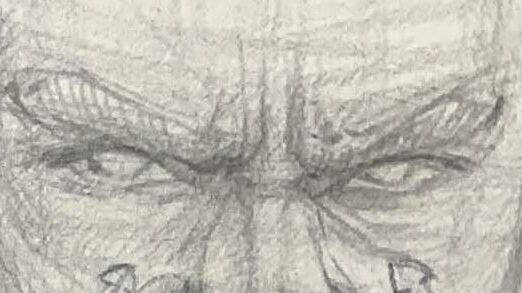
- Upper lip may lift and show teeth, but unlike a smile, the mouth corners remain horizontal or curve downward.
- Muscles involved::
- Corrugator supercilii: Pulls the brows inward
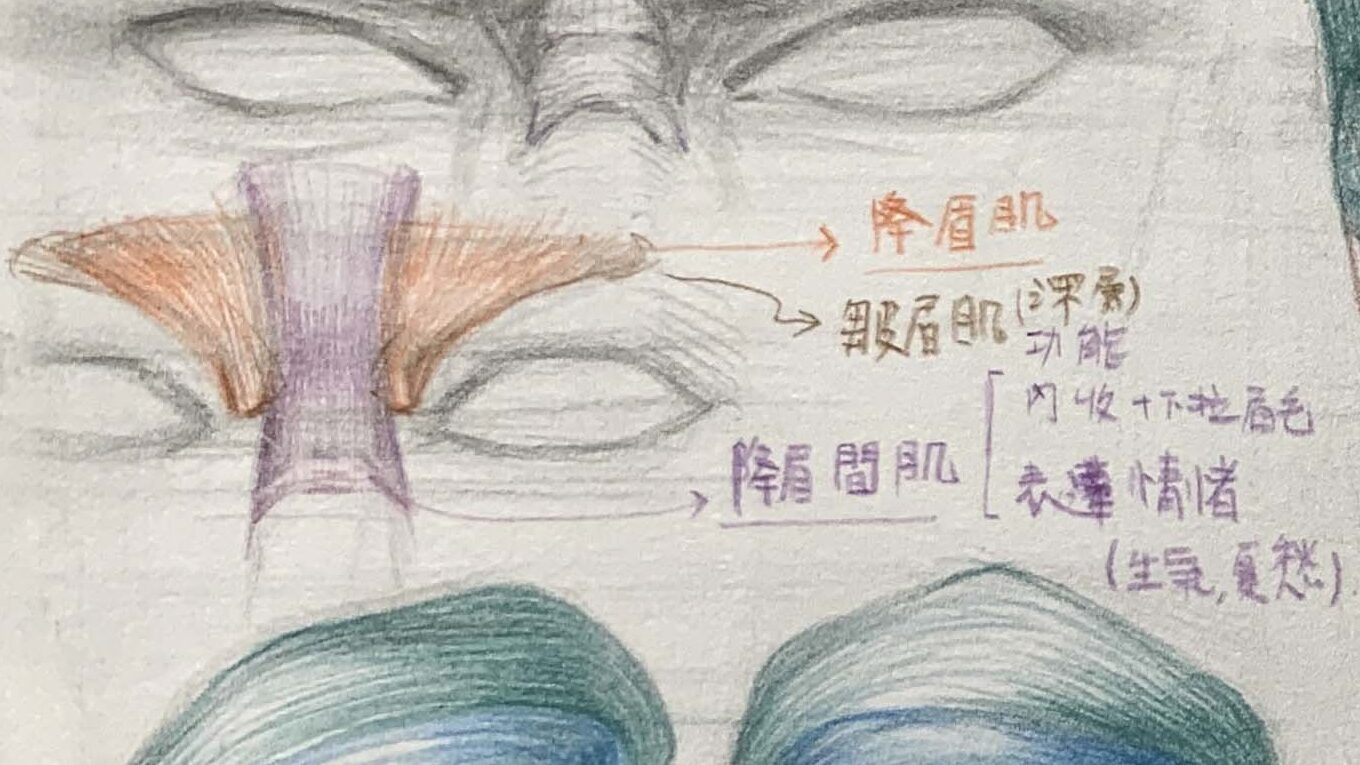
- Depressor supercilii: Presses the brows downward
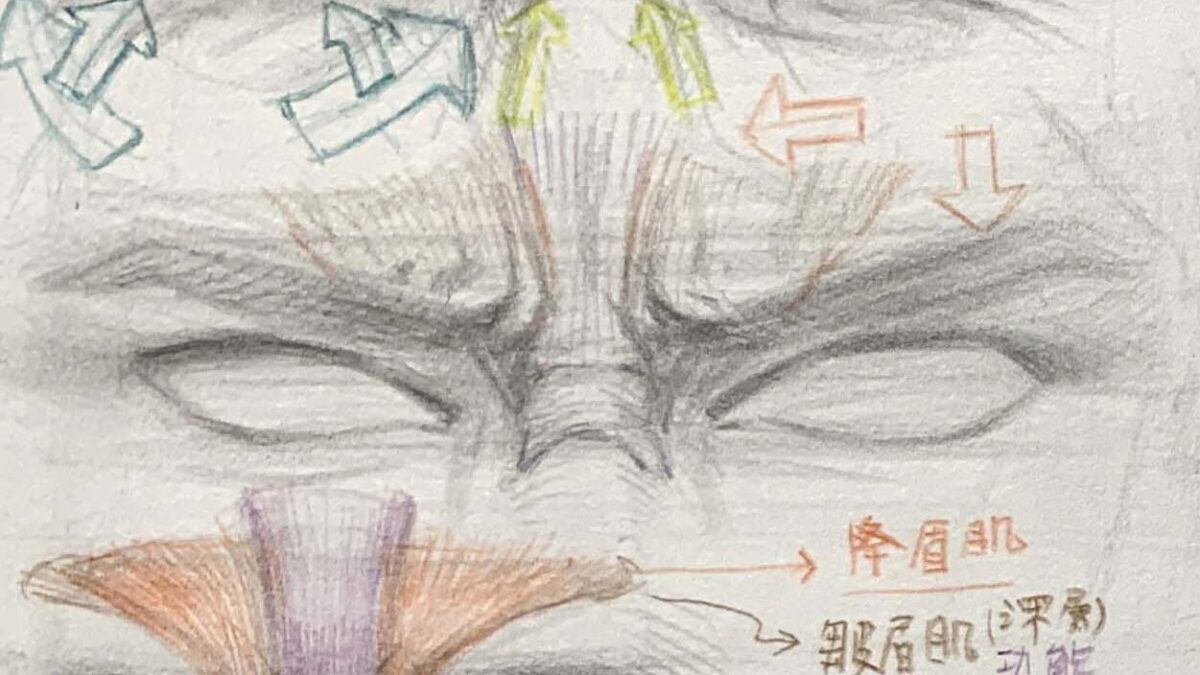
- Nasolabial folds deepen (nostrils may flare slightly)
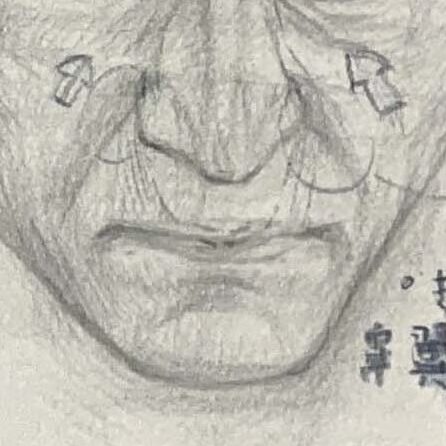
Anger expression summary:
- Eyebrows form a “furrowed” or “three-line” shape
- Vertical wrinkles appear on the nasal bridge
- Depressor muscles gather the brows; vertical lines form at the forehead center
- Nasolabial folds deepen, nostrils slightly flare
- Mouth tightly closed or clenched; cheek muscles tense
- Chin tightens; lips compress
Expression: Surprise / Mouth wide open
Main muscles: Frontalis, levator labii superioris, orbicularis oculi
Muscle actions and features::
- Frontalis lifts, forming horizontal forehead wrinkles
- Jaw drops, shifting the entire lower jaw downward
- Frontalis lifts brows → eyes widen
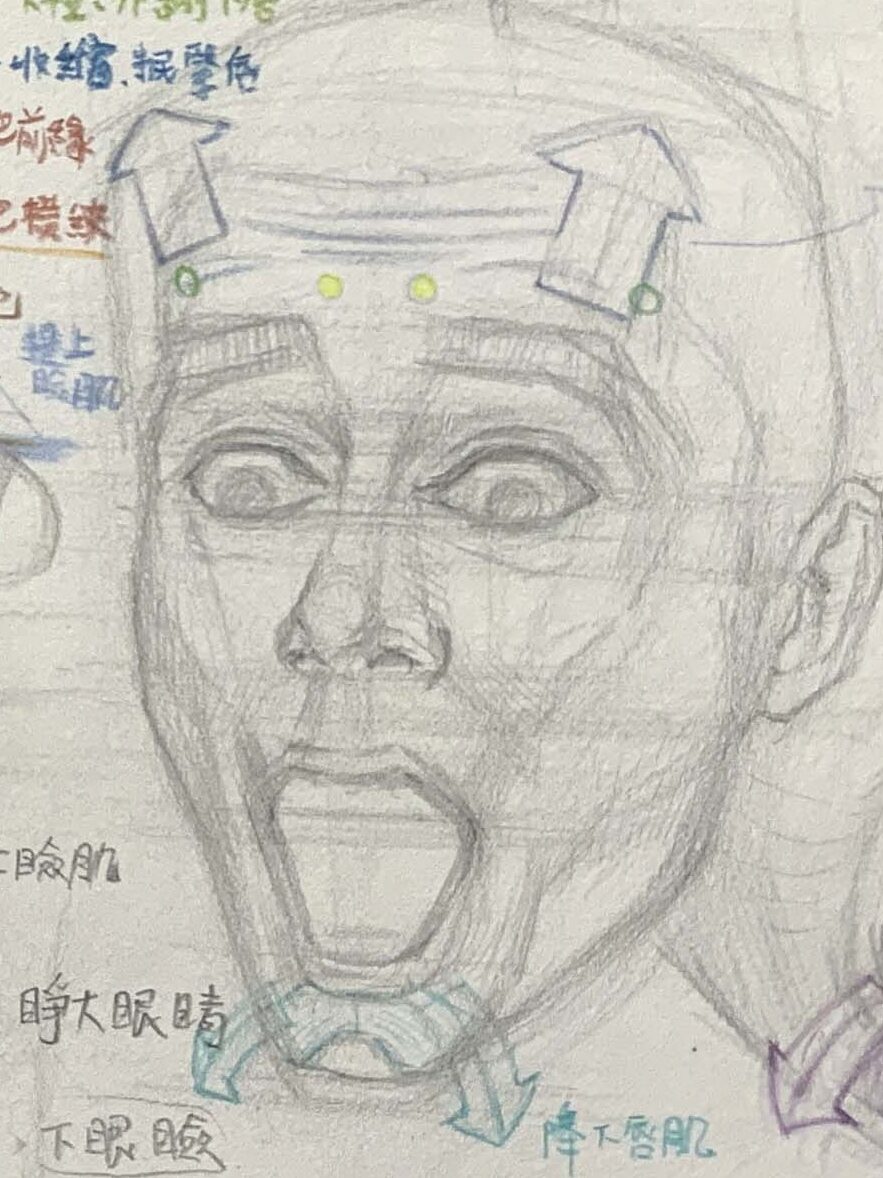
Tips for drawing surprise expressions:
- Mouth forms an oval shape; jaw elongates downward
- Forehead noticeably deforms; brows arch upward
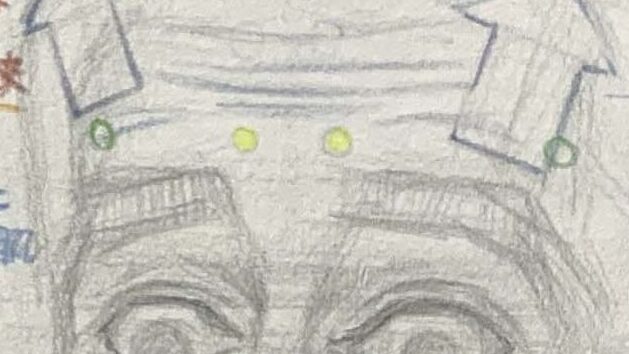
- Eyebrows lift overall, and the forehead forms horizontal wrinkles
- Upper eyelids contract (eyes widen), orbicularis oculi relaxes
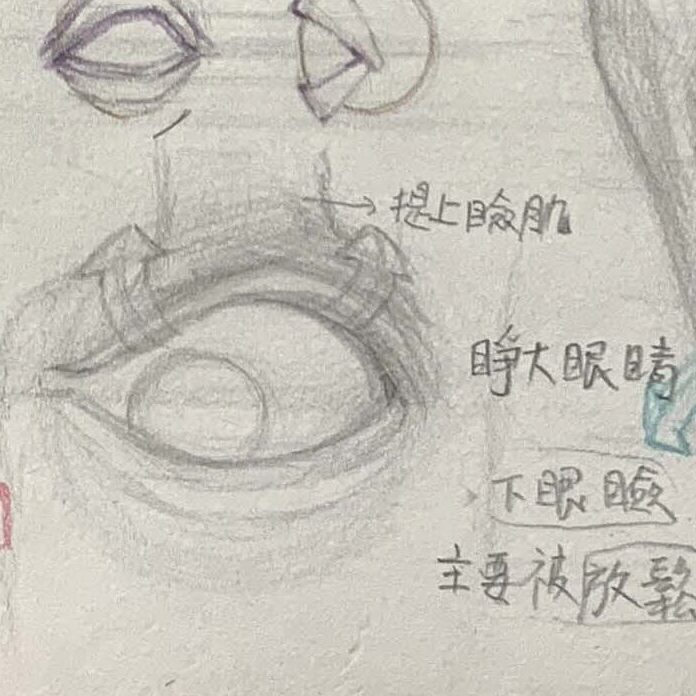
- Mouth opens downward, possibly with relaxed chin muscles

Bonus: How to observe and practice expressions?
Recommended practice:
- Draw multiple emotions on the same face → compare muscle and fat pad deformations
- Record your own facial expressions and analyze frame-by-frame
- Try expression transitions from low → mid → high intensity (e.g., smile → big laugh)
These are the basics of drawing facial expressions.
Have you encountered any challenges when drawing expressions?Instagram These are the basics of drawing facial expressions.
Have you encountered any challenges when drawing expressions?, feel free to leave a comment or message me on Instagram to connect!
―――――――――――――――――
If you're interested in learning to draw but don't know where to start, or if you'd like to understand the knowledge behind drawing,
feel free to join my LINE and contact me. In my classes, I organize drawing methods in a clear and structured way.
Click here to learn more about my drawing courses!
Further Reading
Human Skull Sketch: Learn Anatomy for Accurate Portraits
How to Draw Arms: Learn Arm Movements and Bone Proportions
How to Accurately Master Hand Proportions and Joint Structure
How to Draw Ears:Simplified Ear Structure and Shading Tips
How to Sketch Facial Muscles: Capture Realism and Expression
Building Up from Simple Contours to Detailed Eye Portraits
Capturing Realism in Lip Drawing: Key Structures and Shading
Understanding the Three Key Elements of Head Structure
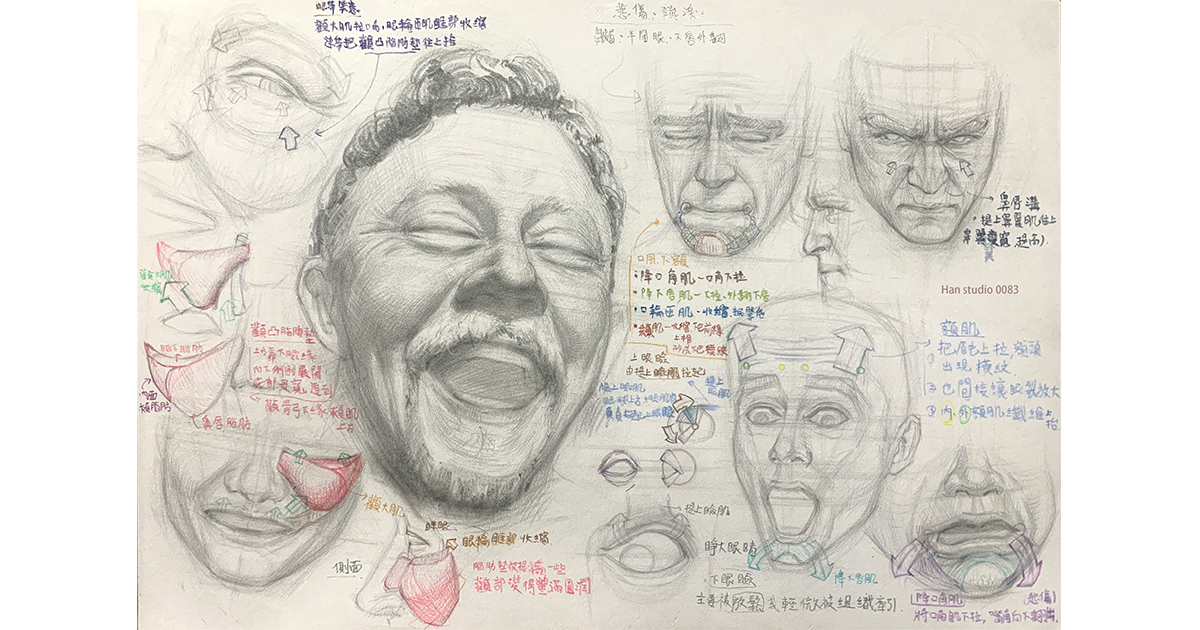
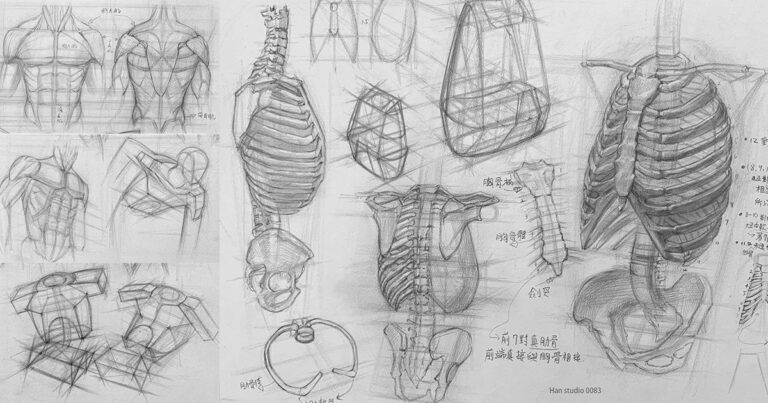
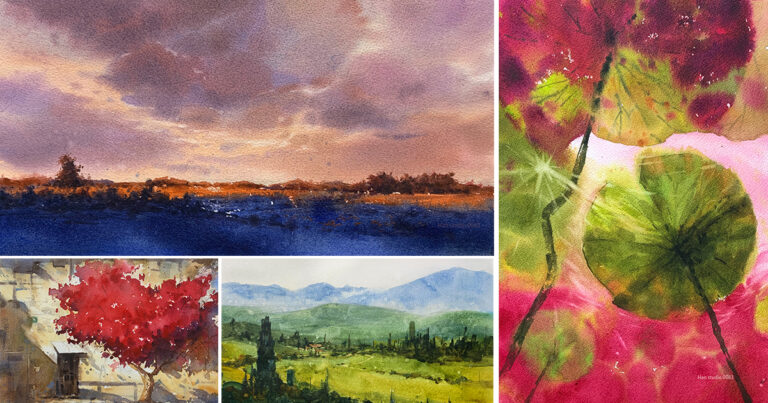
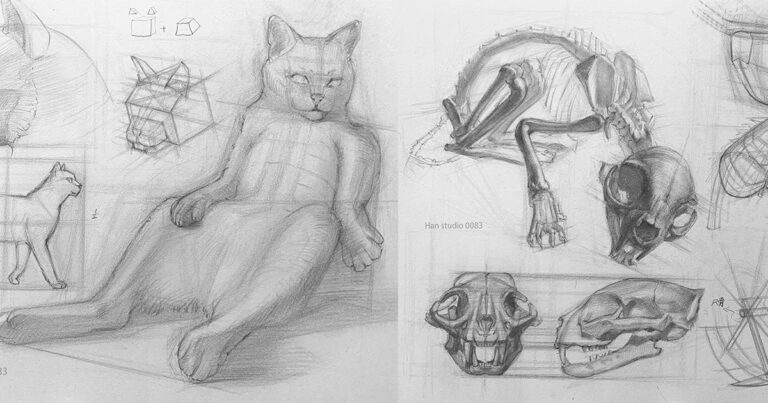
Leave a Reply